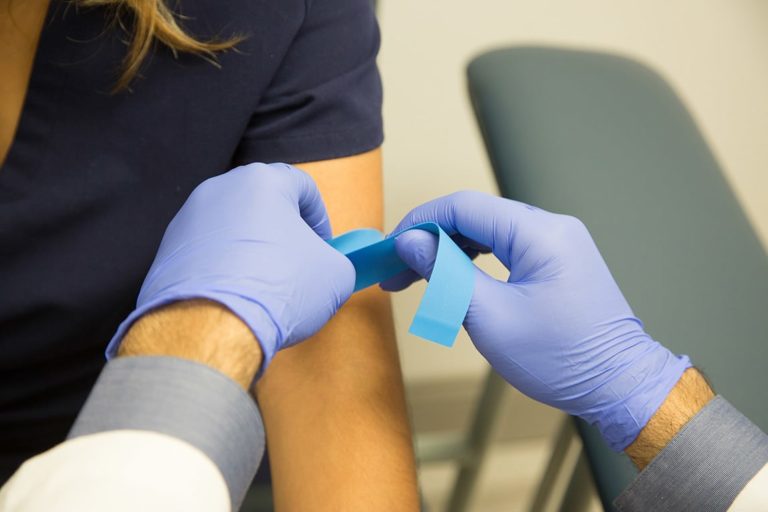The Best Strategy To Use For Northeast Medical Institute - New Haven Campus Phlebotomy Course & Cna Class
The Best Strategy To Use For Northeast Medical Institute - New Haven Campus Phlebotomy Course & Cna Class
Blog Article
Some Of Northeast Medical Institute - New Haven Campus Phlebotomy Course & Cna Class
Table of ContentsAbout Northeast Medical Institute - New Haven Campus Phlebotomy Course & Cna ClassUnknown Facts About Northeast Medical Institute - New Haven Campus Phlebotomy Course & Cna ClassRumored Buzz on Northeast Medical Institute - New Haven Campus Phlebotomy Course & Cna ClassThe Facts About Northeast Medical Institute - New Haven Campus Phlebotomy Course & Cna Class RevealedNortheast Medical Institute - New Haven Campus Phlebotomy Course & Cna Class Fundamentals ExplainedTop Guidelines Of Northeast Medical Institute - New Haven Campus Phlebotomy Course & Cna Class
The use of such gadgets ought to be gone along with by various other infection prevention and control practices, and training in their usage.For setups with reduced resources, price is a driving aspect in procurement of safety-engineered gadgets - CNA Courses. Where safety-engineered tools are not offered, knowledgeable use a needle and syringe serves. Accidental direct exposure and details details about an event need to be taped in a register. Assistance solutions must be promoted for those that undergo unintentional exposure.
labelling); transport conditions; interpretation of results for clinical administration. In an outpatient department or facility, offer a committed phlebotomy cubicle containing: a clean surface area with two chairs (one for the phlebotomist and the various other for the individual); a hand clean container with soap, running water and paper towels; alcohol hand rub. In the blood-sampling area for an outpatient division or facility, supply a comfortable reclining sofa with an arm rest.
Some Known Questions About Northeast Medical Institute - New Haven Campus Phlebotomy Course & Cna Class.
Guarantee that the signs for blood sampling are plainly specified, either in a composed procedure or in recorded instructions (e.g. in a lab type). Accumulate all the tools needed for the treatment and area it within risk-free and simple reach on a tray or trolley, making sure that all the products are plainly visible.
Introduce yourself to the individual, and ask the client to mention their full name. Check that the laboratory type matches the client's identity (i.e. match the client's details with the research laboratory kind, to make certain accurate recognition).
Make the patient comfy in a supine position (ideally). Place a tidy paper or towel under the patient's arm. Talk about the test to be executed (see Annex F) and get verbal consent. The individual has a right to refuse a test at any type of time prior to the blood tasting, so it is very important to guarantee that the client has recognized the procedure.
The Ultimate Guide To Northeast Medical Institute - New Haven Campus Phlebotomy Course & Cna Class
Extend the person's arm and examine the antecubital fossa or lower arm. Find a capillary of a good dimension that shows up, straight and clear. The layout in Section 2.3, shows usual positions of the vessels, but many variants are possible. The average cubital blood vessel exists in between muscle mass and is generally the most easy to penetrate.
DO NOT insert the needle where veins are drawing away, because this raises the opportunity of a haematoma. The capillary needs to be noticeable without using the tourniquet. Situating the capillary will certainly aid in determining the proper size of needle. Apply the tourniquet about 45 finger sizes over the venepuncture website and re-examine the blood vessel.
Specimens from main lines carry a risk of contamination or erroneous lab examination outcomes. It is appropriate, but not ideal, to draw blood specimens when initial presenting an in-dwelling venous gadget, prior to attaching the cannula to the intravenous fluids.
About Northeast Medical Institute - New Haven Campus Phlebotomy Course & Cna Class
Enable the area to completely dry. Failing to permit enough get in touch with time increases the threat of contamination. DO NOT touch the cleansed site; in particular, DO NOT put a finger over the blood vessel to direct the shaft of the revealed needle. It the website is touched, repeat the sanitation. Carry out venepuncture as adheres to.
Ask the individual to develop a clenched fist so the blood vessels are a lot more famous. Enter the vein swiftly at a 30 degree angle or less, and remain to present the needle along the blood vessel at the most convenient angle of access - CNA Training. Once adequate blood has been accumulated, release the tourniquet BEFORE withdrawing the needle
Not known Factual Statements About Northeast Medical Institute - New Haven Campus Phlebotomy Course & Cna Class
Take out the needle gently and use mild stress to the website with a clean gauze or dry cotton-wool round. visit here Ask the patient to hold the gauze or cotton woollen in place, with the arm expanded and raised. Ask the client NOT to flex the arm, since doing so creates a haematoma.

Unknown Facts About Northeast Medical Institute - New Haven Campus Phlebotomy Course & Cna Class
Do not push the syringe plunger due to the fact that extra stress raises the danger of haemolysis. Where feasible, keep televisions in a shelf and move the rack in the direction of you. Infuse downwards into the appropriate coloured stopper. DO NOT eliminate the stopper due to the fact that it will certainly launch the vacuum cleaner. If the sample tube does not have a rubber stopper, infuse very slowly right into television as decreasing the stress and rate utilized to move the specimen decreases the threat of haemolysis.

Report this page